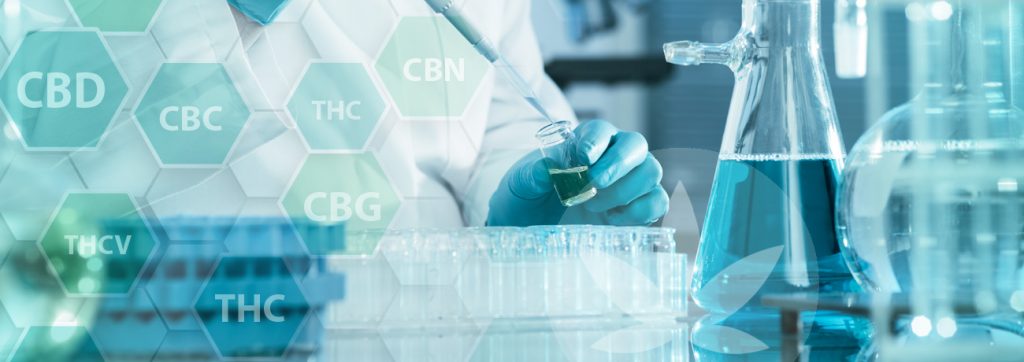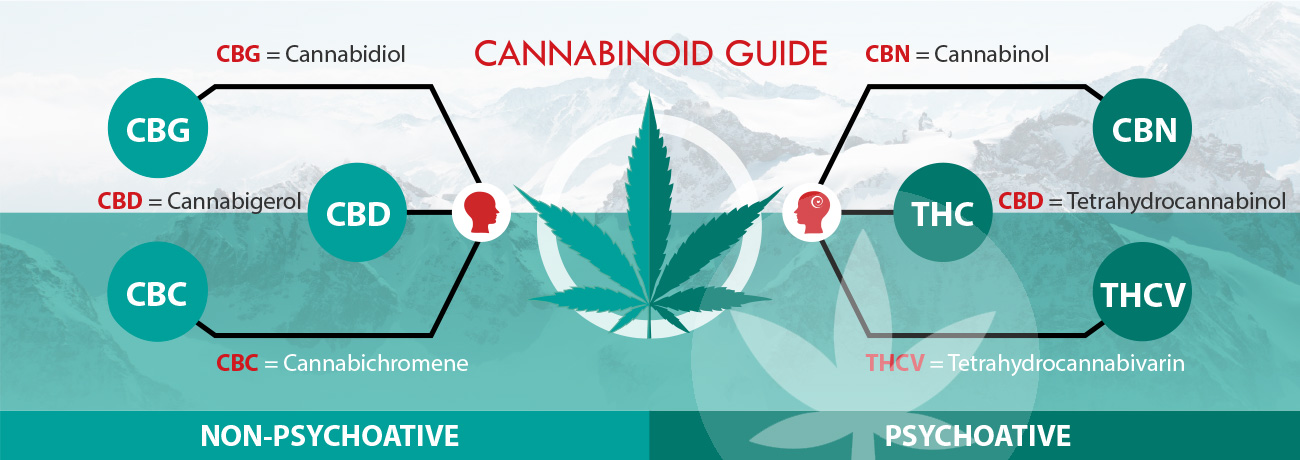What are cannabinoids?
Cannabinoids are chemical compounds that can be found within the Cannabis sativa species (and also in a handful of other flora). Cannabinoids are present naturally inside these types of plants, making up part of their biological structure. Cannabinoids found inside plants are technically called “phytocannabinoids”, but fall under the collective category of cannabinoids.
You could, to draw a picture, liken these cannabinoids to ingredients in a recipe—without them, you wouldn’t have the finished product; in this case, the hemp plant. And while cannabinoids are essential, they only form part of the recipe. We also need flavonoids and terpenes—but we will explain their function in a separate article.
Different cannabinoids in cannabis
Every cannabinoid has a slightly different purpose, but in total, there are believed to be over a hundred of them inside a single hemp plant. Part of the difficulty in understanding what each cannabinoid does stems from the fact that they don’t all exist at the same time or in similar concentrations. Many are only present while hemp is growing, while others need exposure to the atmosphere or sunlight before they can develop.
In general, mature hemp plants (that’s what we use to extract CBD) feature similar ratios of cannabinoids, including CBD, CBN, CBC, and many more. The letters are acronyms for their scientific names and help to differentiate between their chemical structure.
In hemp, CBD makes up the lion’s share of cannabinoids, while the others only feature in trace amounts. Using sophisticated machinery, it is possible to isolate specific cannabinoids and transform them into a consumable product—CBD oil, capsules, lotions, etc.
Having dozens of cannabinoids at hand is all well and good, but without a useful function, they are pretty pointless to us—that’s where the ECS steps in. Thanks to millions of years of evolution, each of us (including the household dog and cat) has an endocannabinoid system (ECS). This unique regulatory system is capable of interacting with cannabinoids, triggering a wide range of changes inside the body.
Cannabinoid receptors and the endocannabinoid system
The endocannabinoid system is a vast network that extends from the central nervous system to the major organs and nearly everywhere in between. Located at various points throughout the ECS are cannabinoid receptors. These receptors act as activation points, only reacting when they are stimulated or inhibited by cannabinoids.
When a cannabinoid is consumed (usually orally), it passes through our digestive system where it gets broken down by our liver, before being distributed around the body via the bloodstream. As it travels around the body, it aims for a receptor to interact with. However, it isn’t a complete free-for-all. Cannabinoid receptors work using a lock and key principle—this is why certain cannabinoids have effects that others don’t.
CBD, for example, will only interact with receptors that match its chemical structure. The same rules apply to all cannabinoids, as each one can only interact with specific receptors in specific locations throughout the body. Where that receptor is located determines which biological outcome is triggered.
There are dozens of cannabinoids, and they all do something different
We’ve covered a lot of ground, so it is worth recapping. CBD is one of dozens of cannabinoids found in the Cannabis sativa species. Cannabinoids are chemical compounds that have the unique ability to trigger changes within our body, thanks to the endocannabinoid system. The ECS has evolved over millions of years and exists throughout our entire body.
Its primary role is to maintain balance between all our biological systems. This is important because our body functions best when it is in a state of homeostasis (dynamic equilibrium). Finally, by consuming cannabinoids, we can encourage a range of subtle biological changes thanks to cannabinoid receptors linked to the ECS.
Although CBD is the cannabinoid we are most interested in, there are dozens of others—all with unique characteristics. We won’t go into detail in this article, but stay tuned for a deep dive into each one. If you’ve got a question about cannabinoids, you can trust us to have the answer.


